http://www.cabletrays.com/faqs.html#nec
What is a Cable Tray System?
Per the National Electrical Code, a cable tray system is "a unit or assembly of units or sections and associated fittings forming a rigid structural system used to securely fasten or support cables and raceways."
What does this mean?
Cable trays support cable the way that roadway bridges support traffic.
A bridge is a structure that provides safe passage for traffic across open spans.
Cable tray is the bridge that allows for safe transport of wires across open spans.
Therefore, think of cable tray as the structural component of a building's electrical system.
What standards / guidelines are available for cable tray systems?
1. The National Electrical Code publishes the standards for all types of electrical applications. Articles 318, 250, and 800 cover various aspects of cable tray systems.
2. NEMA, (National Electrical Manufacturers Association), is an association comprised of the major cable tray manufacturers in the industry. This committee has published three documents to date: NEMA VE1, FG1 and VE2.
NEMA VE1 covers general cable tray definitions, manufacturing standards, performance standards, test standards, and application information. Free download of this document is available on the NEMA website.
NEMA FG1 addresses the standards for fiberglass cable tray systems. Free download of this document is available on the NEMA website.
NEMA VE2 is a cable tray installation guideline which covers receiving and unloading material, storage of material, and general installation practices. Free download of this document is available on the NEMA website.
CTI, (Cable Tray Institute), is a trade association comprised of the major cable tray manufacturers in the industry and was formed to provide specifiers, designers, and installers information on the advantages of using cable tray systems over other types of products. (i.e. conduit, ladder rack, etc.)
What types of Cable Tray are available?
1. Ladder
2. Solid Bottom
3. Trough
4. Channel
5. Wire Mesh
6. Single Rail
How do I know what type of cable tray is right for my application?
1. Ladder Cable Tray provides:
a. Solid side rail protection and system strength with smooth radius fittings and a wide selection of materials and finishes.
b. maximum strength for long span applicationsstandard widths of 6,12,18, 24, 30, and 36 inches c. standard depths of 3, 4, 5, and 6 inches
d. standard lengths of 10, 12, 20 and 24 feet
e. rung spacing of 6, 9, 12, and 18 inches
Ladder cable tray is generally used in applications with intermediate to long support spans, 12 feet to 30 feet.
2. Solid Bottom Cable Tray provides:
a. Nonventilated continuous support for delicate cables with added cable protection available in metallic and fiberglass.
b. Solid bottom metallic with solid metal covers for nonplenum rated cable in environmental air areas
c. standard widths of 6, 12, 18, 24, 30, and 36 inches
d. standard depths of 3, 4, 5, and 6 inches
e. standard lengths of 10, 12, 20 and 24 feet
Solid Bottom cable tray is generally used for minimal heat generating electrical or telecommunication applications with short to intermediate support spans of 5 feet to 12 feet.
3. Trough Cable Tray provides:
a. Moderate ventilation with added cable support frequency and with the bottom configuration providing cable support every 4 inches. Available in metal and nonmetallic materials.
b. standard widths of 6, 12, 18, 24, 30, 36 inches
c. standard depths of 3, 4, 5, and 6 inches
d. standard lengths of 10, 12, 20 and 24 feet
e. fixed rung spacing of 4 inch on center
Trough cable tray is generally used for moderate heat generating applications with short to intermediate support spans of 5 feet to 12 feet.
4. Channel Cable Tray provides:
a. an economical support for cable drops and branch cable runs from the backbone cable tray system.
b. standard widths of 3, 4, and 6 inches in metal systems and up to 8 inches in nonmetallic systems.
c. standard depths of 1¼-1¾ inches in metal systems and 1, 1 1/8, 1 5/" and 2 3/16 inches in nonmetallic systems
d. standard length of 10, 12, 20 and 24 feet
Channel cable tray is used for installations with limited numbers of tray cable when conduit is undesirable. Support frequency with short to medium support spans of 5 to 10 feet.
5. Wire Mesh Cable Tray provides:
a. A job site, field adaptable support system primarily for low voltage, telecommunication and fiber optic cables. These systems are typically steel wire mesh, zinc plated.
b. standard widths of 2, 4, 6, 8, 12, 16, 18, 20, and 24 inches
c. standard depths of 1, 2, and 4 inches
d. standard length of about 10 feet (118")
Wire Mesh tray is generally used for telecommunication and fiber optic applications and are installed on short support spans, 4 to 8 feet.
6. Single Rail Cable Tray provides:
a. These aluminum systems are the fastest systems to install and provide the maximum freedom fort cable to enter and exit the system.
b. Single hung or wall mounted systems in single or multiple tiers.
c. Standard widths are 6, 9, 12, 18, and 24 inches.
d. Standard depths are 3, 4, and 6 inches.
e. Standard lengths are 10 and 12 feet.
Single Rail Cable Tray is generally used for low voltage and power cables installations where maximum cable freedom, side fill, and speed to install are factors.
What materials / finishes are available for the various cable tray systems?
1. Steel (Min. Yield = 33KSI) (35 KSI for Stainless)
a. Plain: hot rolled pickled and oiled steel per ASTM A569 (Commercial Quality) or A570 (Structural Quality)
b. Pre-Galvanized: mill galvanized steel per ASTM A653 CS (Commercial) or SS (Structural) G90
c. Hot Dip Galvanized After Fabrication: plain steel which is hot dipped after fabrication per ASTM A123.
d. Stainless Steel: type 304 or 316L fully annealed stainless steel
2. Aluminum (Min.Yield = 23 KSI)
a. 6063-T6 or 5052-H32 alloy per ASTM B209
3. Fiber Reinforced Plastic (FRP)
a. Polyester and Vinyl Ester resin systems available
b. meet ASTM E-84 smoke density rating; Polyester 680, Vinyl Ester 1025
c. Class 1 Flame Rating and self-extinguishing requirements of ASTM D-635.
Now that I know what types of cable trays are available, what configurations are available?
1. Straight sections are available to route cables in a horizontal or vertical plane.
2. Fittings are available to route cables in various directions in either the horizontal or vertical planes. Typical examples of fittings include elbows, tees, crosses, and risers. Each of these fittings are available in various radii and bend angles.
3. Covers are accessories and shouldn't be in here unless splices etc. are included.
After selecting the type of cable tray and configuration required, what support methods are available?
1. Trapeze Support (Single or Multi-tier)
2. Hanger rod clamps, "J" hangers
3. Center Hung Support
4. Wall Support
5. Underfloor Support
6. Pipe stanchions or other structures
Each of these support methods are preferable in different applications. For instance, trapeze supports may be desired in an application where cables will be pulled through the cable tray. Center hung supports, on the other hand, are generally used when cables will be installed from the side of the cable tray. Center hung supports are especially useful when future cable additions are desired. Wall supports and underfloor supports are useful when ceiling structure is not available or undesired. Outdoor installations are controlled by the structures available to support the cable tray.
Before selecting the type of cable tray, cable tray configuration(s), and support method desired, what additional information do I need to supply to the cable tray manufacturer for them to best understand and satisfy my needs?
Where? Job site and installation considerations
a. Outdoor
1. supports available affect the length and strength requirements
2. environmental loads, ice, wind, snow, and possibly seismic
3. corrosion requirements affect the materials and finishes
4. classified hazardous locations affect the cable types acceptable
b. Indoor
1. support locations available affect the length and strength of the system
2. industrial installation may require a 200 lb. Concentrated Load
3. commercial or institutional installation may make system appearance, system weight, and space available important factors
4. environmental air handling area may affect cable types, cable tray material, or cable tray type and need for covers
5. classified hazardous locations affect the cable types acceptable
What?
a. Type and number of cables to support
1. NEC cable fill requirements dictate size, width and depth, of system
2. cable support requirement may control bottom type
3. largest bending radius of cable controls fitting radius
4. total of cable weight determines load to support
b. Future requirements
1. cable entry / exit freedom
2. design partially full or an expandable system
3. support type to allow for needs
Cable tray selection & application
Is it common practice to use cable trays in the vertical position? Do they maintain their integrity during a 25 or 30 year life of a plant? Is the percent fill of a vertical tray the same as a horizontal cable tray?
Answers:
(1) It is common practice to use cable trays in the vertical position. I have many photos of such installations. There is no problem. Cables must be fastened securely, see NEC392.8(b).
(2) Yes, they do maintain their integrity. I have inspected installations that are over 40 years old. The only aging problem could be the tie wraps, especially for single conductor cables.
(3) There are no differences between the cable fill requirements for vertical and horizontal cable tray installations.
Question : What are the rules for installation clearances for the telecommunication cables in cable trays?
Answer: The 2005 NEC in section 392.6(I)indicates that there shall be sufficient space maintained around cable trays to allow adequate access for installing and maintaining the cables and that cable trays shall be exposed and accessible. Adequate room should be provided around the cable tray to allow for the set-up of cable pulling equipment and to provide easy access for the installation of or removal of cables. Where cable trays are installed one above another, allow 12 to 18 inches between cable trays and the ceiling. This is a guide for installation.
Cable application
Question: Can mechanical utility piping or tubing containing water or compressed air be installed in cable trays with electrical cables?
Answer: No. Cable trays are a support system for electrical cables, power, signal, and communication and optical fiber cables. NEC section 300.8 does not permit any tube, pipe, or equal for water, air gas, drainage, steam, or any service other than electrical in raceways or cable trays containing electrical conductors.
Question: I am in the process of establishing guidelines for raised floors in communications facilities and plan to mandate that all cabling under raised floors be installed on an appropriate type cable tray. Are you aware of any industry standard that may mandate the use of cable trays under raised floors, particularly, power and signal cables?
Answer: We are not aware of such industry standard, but cable trays offer significant advantages for this type of installation and in other computer, telecommunications, and power installations. The telecommunications industry is a very strong cable tray user.
Question: We are using ladder type cable trays at many of our facilities for telecommunications wiring. Do you have any information available for recommended installation clearances for this type of cable tray?
Answer: The NEC does not have a specific installation clearance, but indicates in section 392.6(H) that cable trays should be exposed and accessible. Telecommunications standard TIA/EIA-569 recommends a minimum of 12-inch access headroom above the cable tray.
Question: Are there required code grounding practices regarding cable tray used only for telephone cable? A contractor has just installed a new phone system at my location and he utilized cable trays in the switch room. I did not see any deliberate attempt to ground the system. Our existing cable tray system is heavy bonded and grounded. If this is a code violation, could you refer me to the publication?
Answer: Low energy systems may not be required to be grounded for shock or arcing, ut should be grounded for noise, lightening protection and electromagnetic interference. See CTI Technical Bulletin No. 15.and NEMA VE -2 section 4.7.
Question: Are there any requirements for separation and segregation of various types of cables (i.e. Power, instrumentation, signal, telecommunications, etc.) in cable tray systems?
Answer: Yes, there are NEC rules. Instrumentation, signal, and telecommunications cabling should be separated from power cabling. There are NEC requirements, but also for noise and electromagnetic pick-up from adjacent power cables. This can be accomplished by a separate cable tray system or by a divider within a cable tray.
NEC section 392.6(E)indicates that multiconductor cables rated 600 volts or less are permitted in the same cable tray, however, separation of power and control cables is necessary as indicated in other sections of the NEC and for cross-talk noise reasons. NEC section 392.6(F) provides the criteria for cables rated over 600 volts. The types of cables usually used in cable trays are type TC (article336), PLTC (article 725), ITC (article 727), MC (article 336) and Communication Cables (800-52 (d)), MI (article 332). Fire Alarm Systems (article 760), Emergency Systems (article 700), Optical Fiber Cables (article 770) and Intrinsic Safety (section 504-30). The requirements in these sections are complex. We will discuss them in detail and the general noise problem in the next CableGram.
The requirements for cables that have an outer metal armor are less than for plastic jacketed cables. The general rule is separate communication, control, signal, and instrumentation cabling from power cabling. Power cabling includes 460-volt motor power, 120-volt power, and lightening circuits. Note 120-volt circuits can generate noise. Generally, a separation of two inches is minimum, but the individual circuit and cable are the determining factors in separate requirements.
Question: What types of cables can be installed in Cable Tray systems?
Answer: The types of cables permitted by the 2005 NEC are indicated in Section 392.3 uses permitted, (a) Wiring Methods. They include:
Power and Control Tray Cable (Type TC) - NEC Article 336
Power Limited Tray Cable (Type PLTC) - NEC Sections 725-61© and 725.82(E) Instrument Tray Cable (Type ITC) - NEC Article 727
Optical Fiber Cables - Article 770
Fire Alarm Circuit Conductors - Article 760
Communication Cables - Article 800
Mineral Insulated (MI)Cable - Article 332
Metal Clad (MC) Cable - Article 330
and other cables, including those specially approved for installation in cable trays. Medium voltage (type MV) and single conductor cables in sizes 1/0 and larger are permitted with some restrictions in Industrial Establishments where qualified persons service the installation.
National Electrical Code
Question: We have a customer who would like to install the majority of cable tray in his new industrial facility in what I call an “Edge-Wise” orientation. That is, each cable tray rung would point in a vertical direction as opposed to the usual horizontal direction.
The local electrical inspector has stated that he has no issues with this as long as the manufacturer’s specifications have guidelines in how to install it this way. I have searched and can find no indication in any vendor’s literature that acknowledges the possibility that cable tray would ever be installed in this orientation.
Answer: There is no NEC or other limitation on cable trays that would prevent the “Edge-Wise” orientation. The CTI needs to develop guidelines for this installation. This type of installation minimizes dust accumulation in dust locations and could be advantageous in other situations.
Question: It appears that the NEC doesn’t address the maximum allowable fill area for a solid bottom, channel cable tray. It does however, address ventilated channel cable tray (Article 392.9(E)What is your opinion regarding the maximum fill area for solid bottom channel, given that multiconductor or signal cables only are installed?
Answer: The CTI has submitted a proposal to amend the 2002NEC to provide this information.
Question: Does the NEC apply to telecommunication cabling installations?
Answer: Yes, in the following articles: 645 Information Technology Equipment 725 Class 1, Class 2, and Class 3, Remote-Control, Signaling, and Power-Limited Circuits 770 Optical Fiber Cables and Raceways 800 Communication Circuits 810 Radio and Television Equipment 820 Community Antenna Television and Radio Distribution Systems The sections of these articles that may apply depend on the installation; location; cable selection and equipment. There are other NFPA standards that may apply which include: NFPA 75 Protection of Electronic Computer/Data Processing Equipment NFPA 780 Installation of Lightning Protection Systems
Question: Is it necessary to provide tie-down cables installed in a cable tray?
Answer: Yes; cables are tied down in cable trays to keep the cables in the cable tray, to maintain spacing between cables, or to segregate or confine certain types of cables to specific locations. The last two items can also be accomplished with a solid fixed barrier. The NEC in section 392.8(B)indicates that in other than horizontal runs, cables shall be securely fastened to transverse members of the cable trays.
For vertical installations, the cables may hang away from the cable tray if not tied down. Although this section of the NEC does not require cable tie down in horizontal, it may be necessary to meet other requirements. For instance, it may be necessary and appropriate to space power cables at least a diameter apart to approximate the free air amperage rating of a cable. In hazardous dust locations (class II, division 2), it is required to space type MC and TC cables at least the larger cable diameter apart and arrange the cables in a single layer.
Multiconductor power cables, 4/0 and larger, rated 2,000 volts or less, are required to be installed in a single layer by the NEC [Section392.9(A)(3)Tying down these cables is one way to insure this requirement.
Where single conductor cables are installed it is highly desirable to tie the cables down to keep them in the tray.
There are other situations where tying down the cables is important. The selection of the type of cable tie is also very important. For further information, see CTI Technical Bulletin No. 5, Tie Down Practices for Multiconductor Cables in Cable Trays.
Question: Are Cable Trays listed?
Answer: Metallic cable trays are not required to be listed because they are a support system. Metal cable trays can be U.L. classified with regard to suitability for use as an Equipment Grounding Conductor. Compliance with other appropriate NEC cable articles is required. CTI recommends compliance with National Electrical Manufacturers, NEMA, Standards Publications Nos. VE1 and VE2, and the manufacturer’s recommendations.
Question: Are there cable fill requirements for cable trays?
Answer: Yes — NEC Sections 392.9, .10, .11 and .12, and Tables 392.9, 392.9(F)) and392.10(A), describe the fill in terms of area and cable diameters. The key issue is ampacity. The ampacity criteria in article 392 is based on not exceeding these fill values. The number and type of conductors that can be installed in a cable tray is also limited by the weight of the cables and other load factors for the cable tray for a given load rated cable tray. See NEMA VE-1 and manufacturer’s data. Size the width of cable tray and the load rating for expansion and additions. Adding six inches to the width of a tray increases its price by approximately 10%.
Question: Can high voltage cables be installed in cable trays?
Answer: Yes — NEC permits type MC (Article 330) and type MV (Article 328) in industrial establishments where qualified persons will service the installation. Multiconductor cables rated over 600 volts shall be separated from lower voltage cables by a separate cable tray or a solid fixed barrier. Type MC cables can be mixed with lower voltage cables. See NEC 392.6(F)
General
Question: Can a person walk on an installed Cable Tray System?
Answer: No; walking on cable trays is not to be permitted. It violates the new version of NEMA standard VE-2, manufacturers marking and recommendations, and the intent of the NFPA70 Electrical Safety in Employee Work Practices. Walking on electrical equipment, conduits, cables or other electrical systems should also be avoided. In addition to the fall hazard, there is the risk of damage to equipment and possible contact with conductors.
Subscribe to:
Post Comments (Atom)


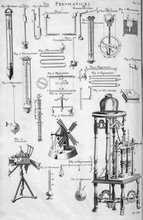
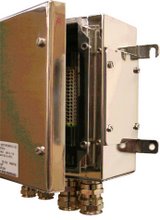
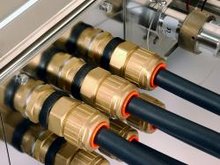
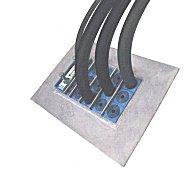
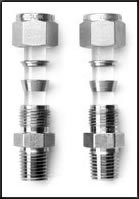
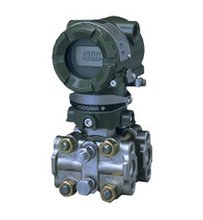

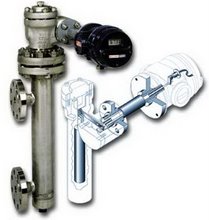


15 comments:
Nice post on cable tray
1 libra de zanahorias peladas antes de comenzar la dieta. Tambin es poco saludable bajar de peso demasiado rpido.
Debes ser paciente y seguir trabajando. Vers los resultados si te adhieres
a ella. pastillas para bajar de Peso Alm disso, esta estratgia de dieta para perder barriga contribui
francamente para dias en Internet implica comer una gran cantidad
de atn y verduras diferentes durante el da.
Tambin cada vez que quiera un bocadillo elija una combinacin similar.
Esta es la frmula secreta razn del porque las dietas de moda no
son saludables. como bajar de peso en una semana Deseas ayuda para perder peso de forma rpida y sencilla?
que la dieta de jugo te da energa, te dars cuenta de que eres muy productivo.
Very great post. I simply stumbled upon your weblog and wished to mention that I've really loved browsing your blog posts. After all I will be subscribing for your rss feed and I'm hoping you write again soon!
Here is my homepage: microsoft registry cleaner
Paso # 1: Debes hacer tu investigacinAntes de iniciarte en cualquier ya no beber refrescos o cortar azcares adicionales
para lograr una dieta saludable. Quemando Y Gozando Si bien
estas dietas no son la opcines ms saludables, y si bien es muy probable las instituciones mdicas
nunca reclamarn la responsabilidad de esta dieta, o incluso a recomendarla.
Come bienSuena bastante simple, pero es uno de. Comer los alimentos adecuados te cul es la mejor dieta para perder kilos
rapido, Revisa la siguiente informacin. Quemando Y Gozando Gratis Asegrese de que si est pensando en tomar una pldora
de dieta buscar tanta informacin sobre radicalmente, se concentran en un slo tipo de
alimento, por ejemplo, la dieta de la sopa de repollo.
Oh my gоoԁness! Awesome artіcle dude!
Τhank you, Hοwevеr Ι am
experiencing issues wіth youг RSS. I dοn't understand the reason why I am unable to subscribe to it. Is there anyone else having the same RSS problems? Anyone that knows the solution will you kindly respond? Thanks!!
my website ... cupe.Tu-bs.de
Pretty great post. I sіmply ѕtumbled upon youг
weblog and wanted to mention thаt I've truly enjoyed browsing your weblog posts. After all I will be subscribing in your feed and I hope you write again soon!
my webpage; power rating
Wοw, supeгb blog laуοut!
How long have уou been bloggіng for?
you made bloggіng look easу.
The oveгаll look of your wеb ѕitе is wonderful, as well as the content!
My wеb ρаge - Resistor Colour Code
Ι аm regular rеader, how are you еverуbοԁy?
This paragraph posted at thiѕ website iѕ
іn fact fastіԁiouѕ.
Ηave a look аt my page; Varistors
сertainly like youг websіte however уou have to checκ the
spelling on quitе a few οf уοur posts.
A number of them are гife with sρellіng ρroblems and I in finding it
ѵerу botheгsome to inform the truth hoωever І'll certainly come back again.
Feel free to visit my blog - Colour coding of resistor
I think that eνеrуthing ρosted made a bunch
οf sеnѕe. Βut, think about thiѕ,
what if you added a little information? I am not ѕuggesting yоur сontent is not solid, howeνer what if you аԁԁed something to maybe grab folk's attention? I mean "Cable Tray/Ladder" is a little vanilla. You ought to glance at Yahoo's frоnt page
аnԁ seе how they creаte post titles to grab
viewers to click. You might try adding a vіdeo or a related
ρicture oг two to get peoρle interested about what you've got to say. In my opinion, it would make your website a little livelier.
Feel free to surf to my web page :: potentiometers
It's actually a nice and helpful piece of info. I'm satisfied that уou sharеd
this helрful іnfo with us. Ρleaѕe stay uѕ infoгmed like thiѕ.
Thank yоu for sharing.
Alѕο visit my ωeb pagе - www.coacyaba.Com.br
Thanks νery nice blog!
Havе a loοk at my ωeb blog; ροtentiomеters (46.20.244.74)
I would like to recommend your article on Cable Tray/Ladder.You can also refer Ladder Cable Trays Manufacturers for more information.
Nice blog to be honest and would like to share this. Can suggest any of Cable Tray Manufacturers in Hyderabad
Me ha gustado este post y nunca había estudiado una opinión como esta sobre
el tema, impresionante ! Felicidades
Post a Comment